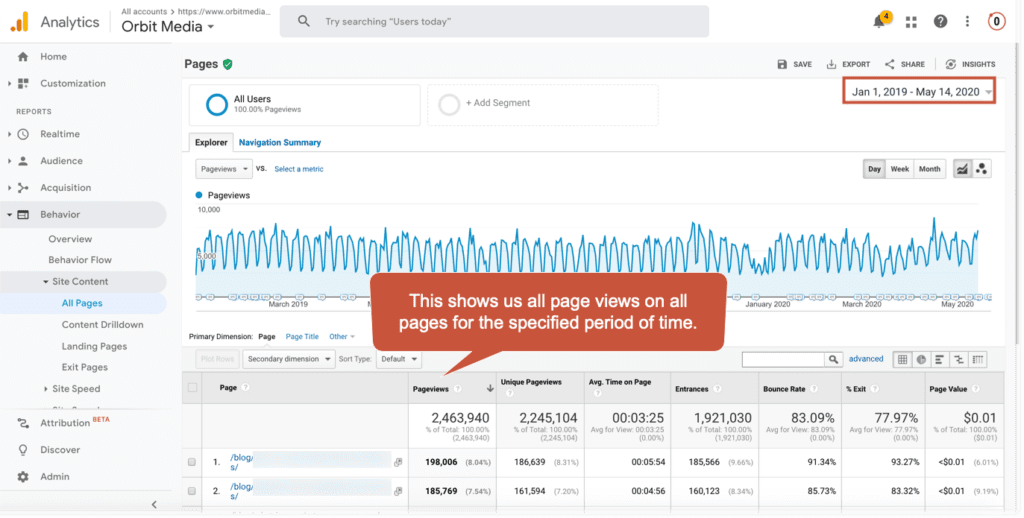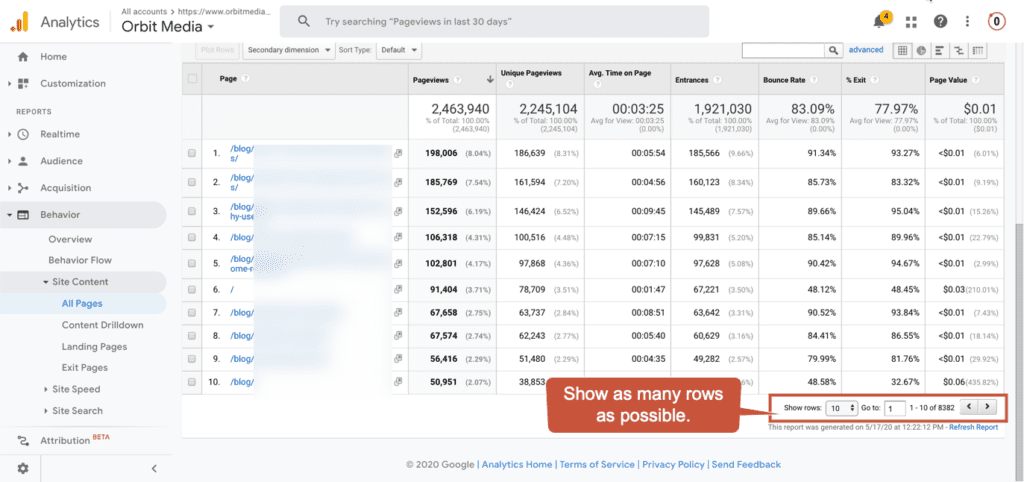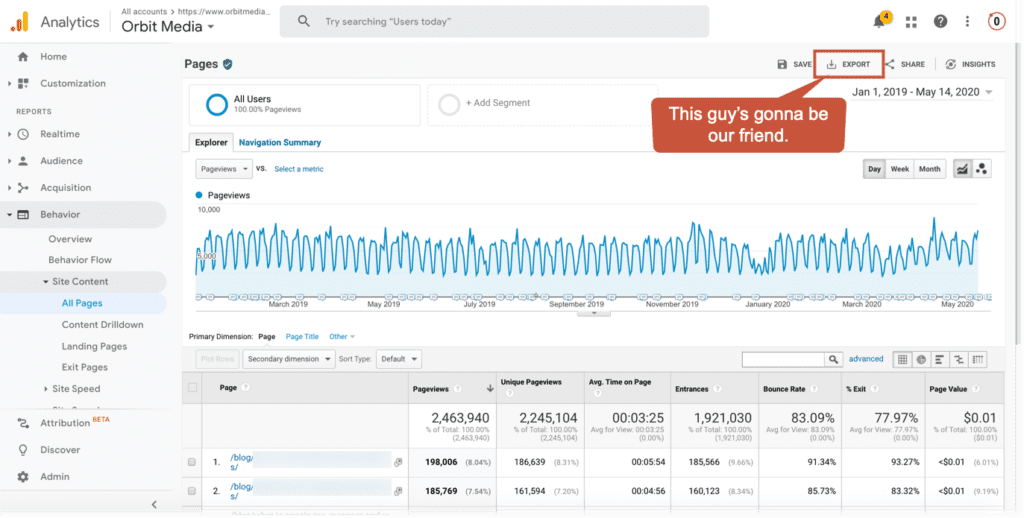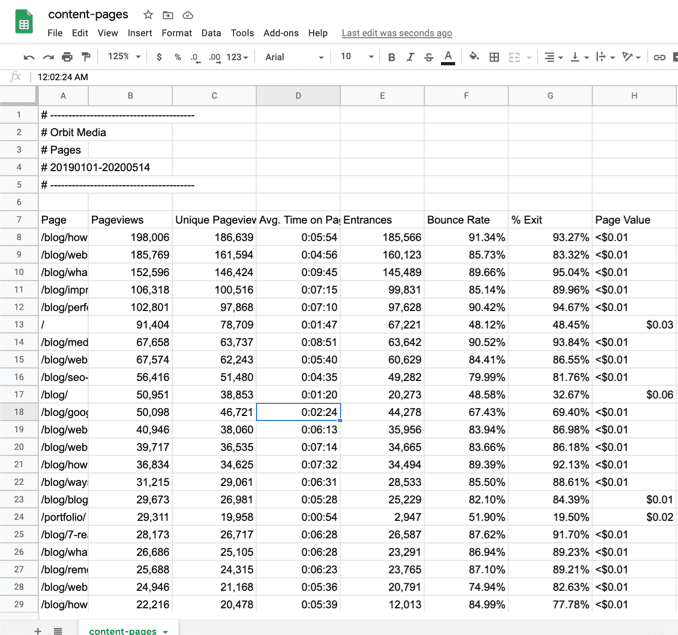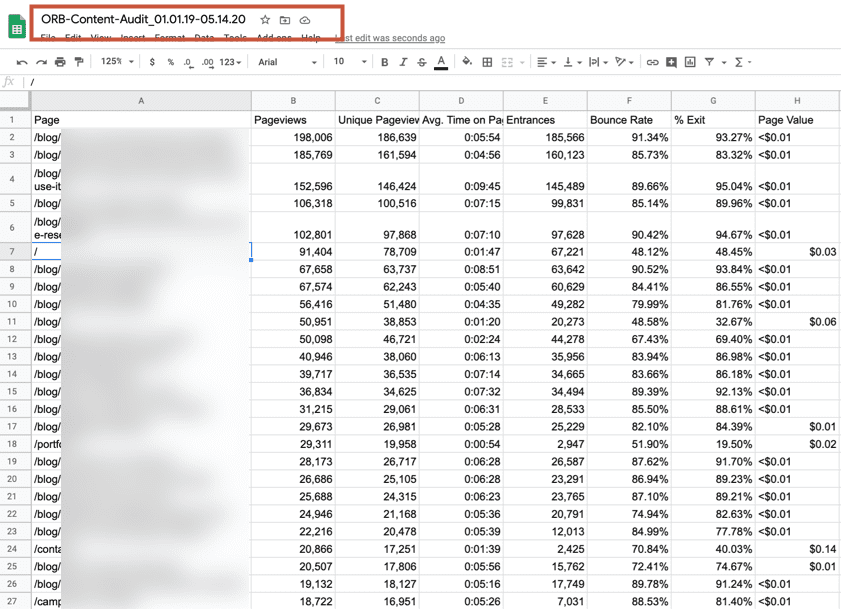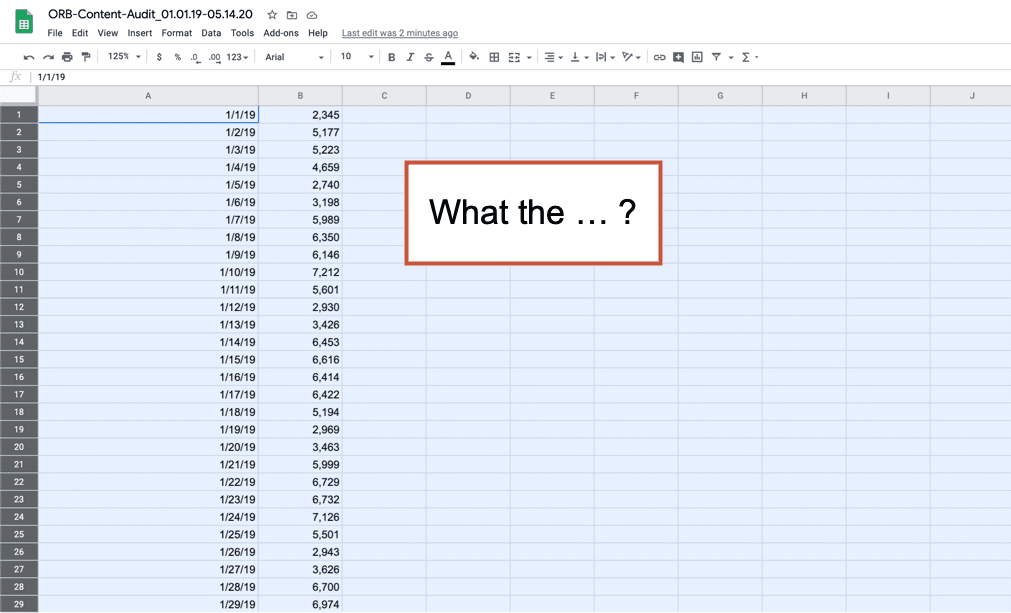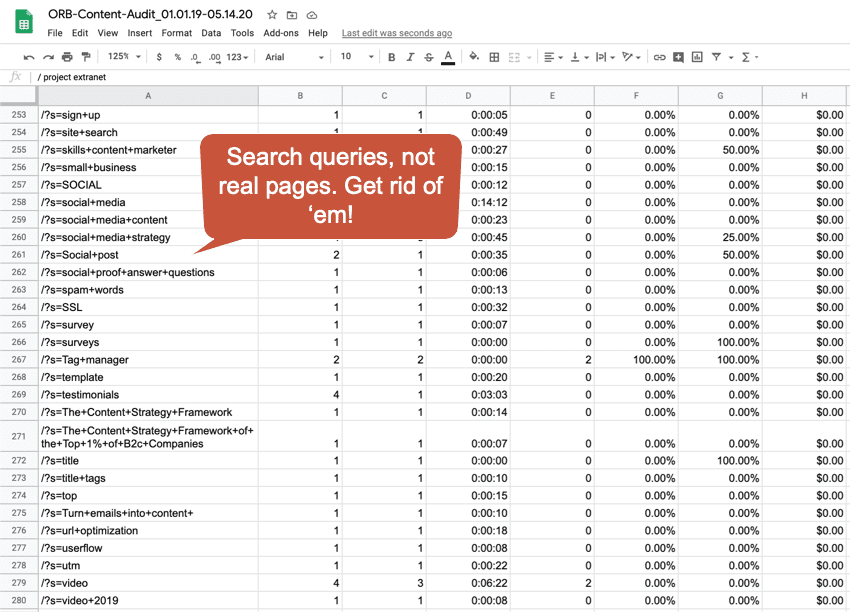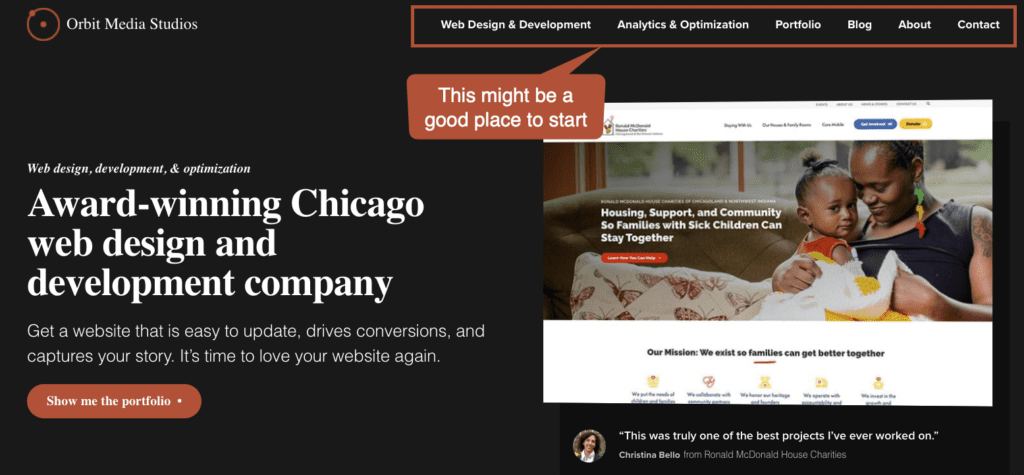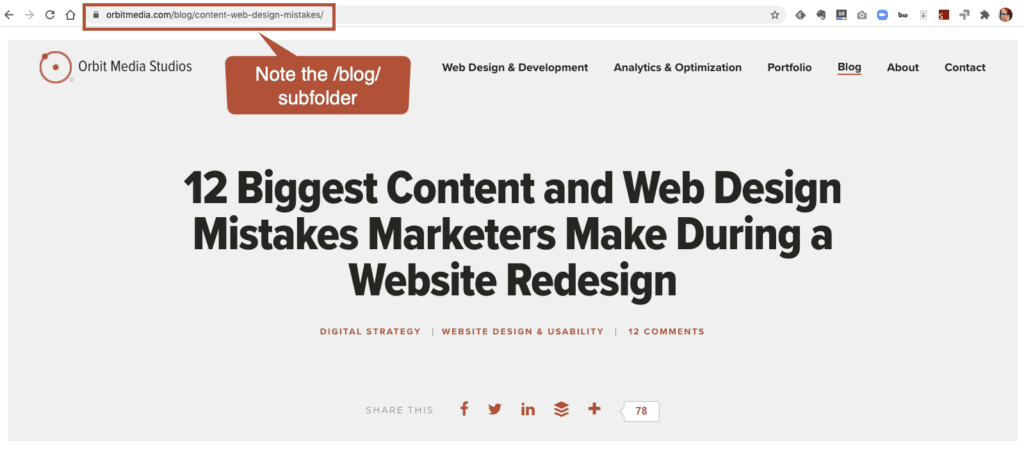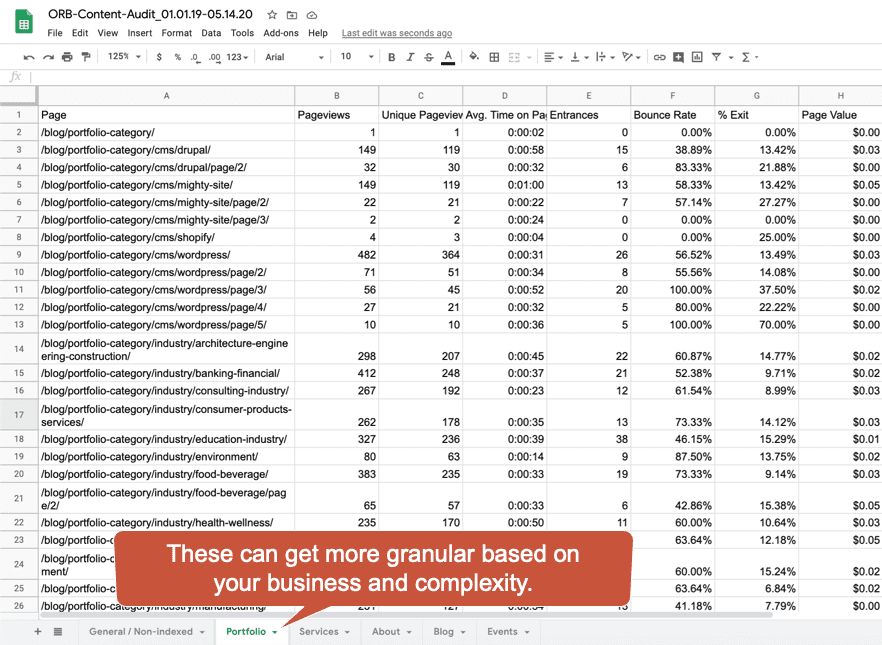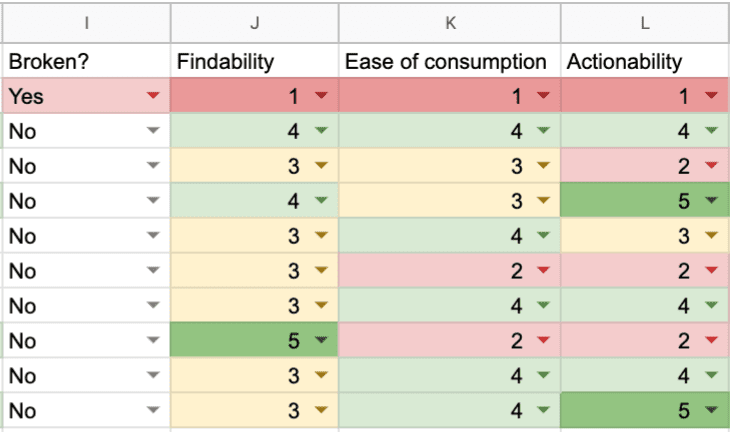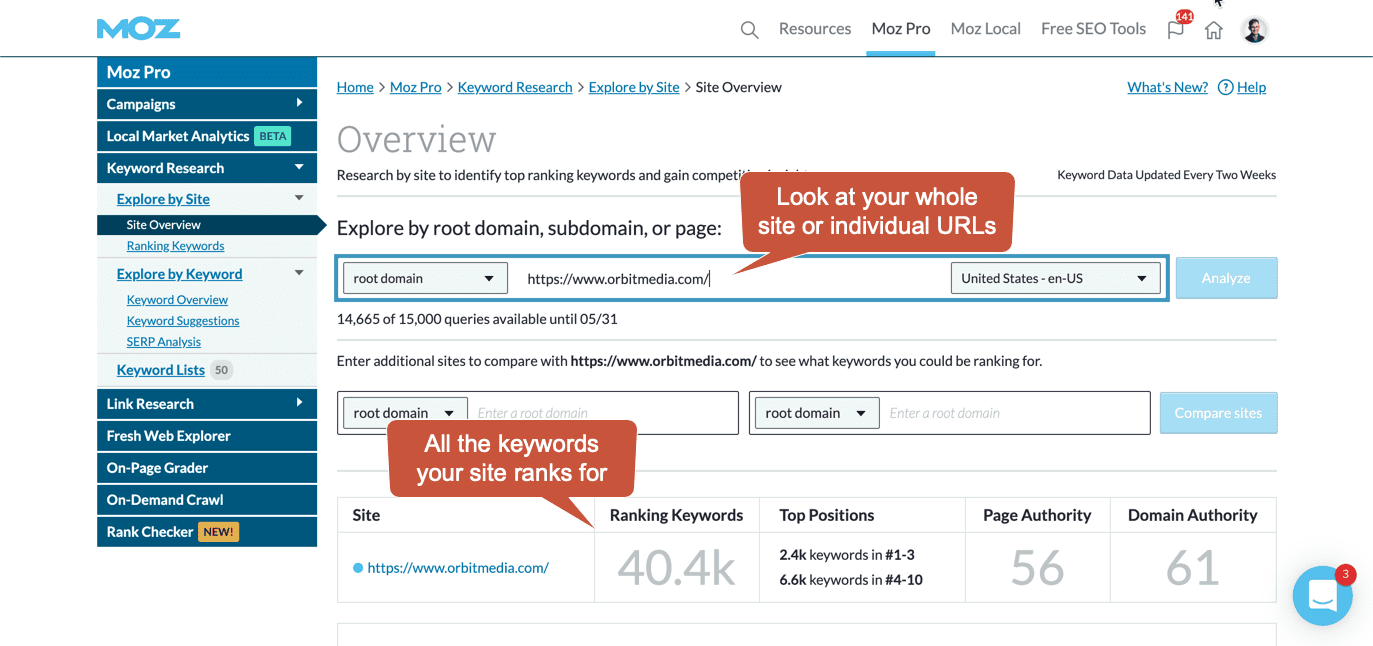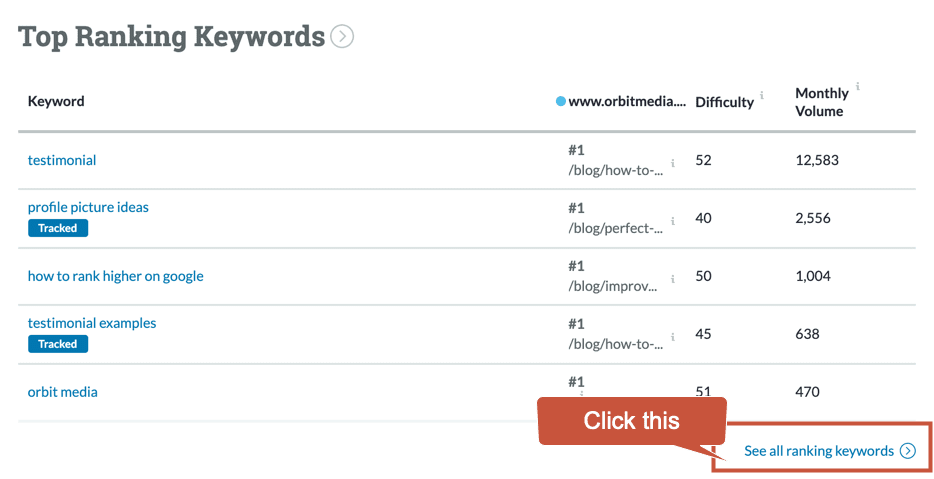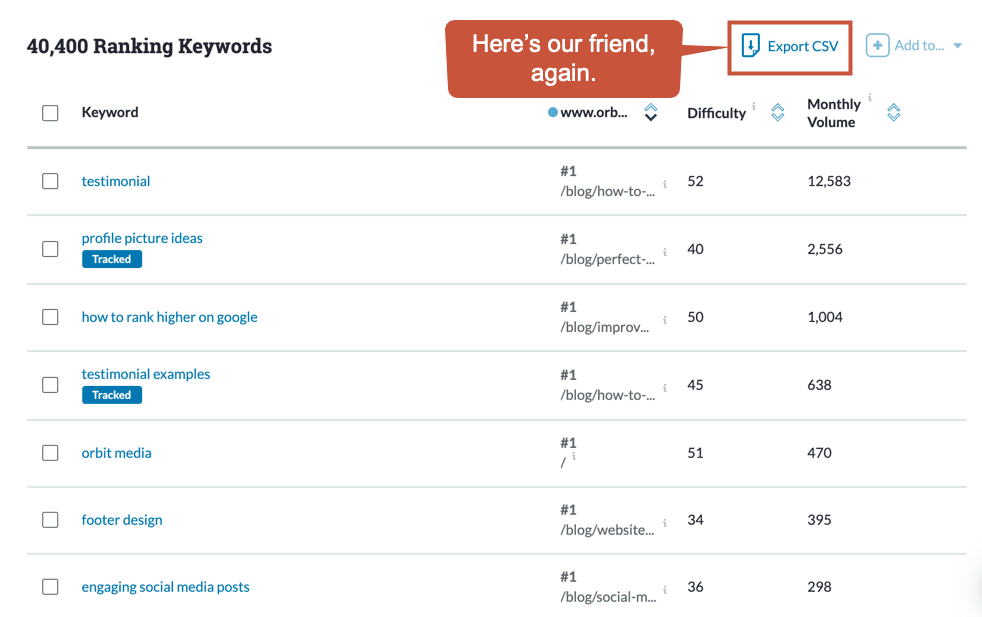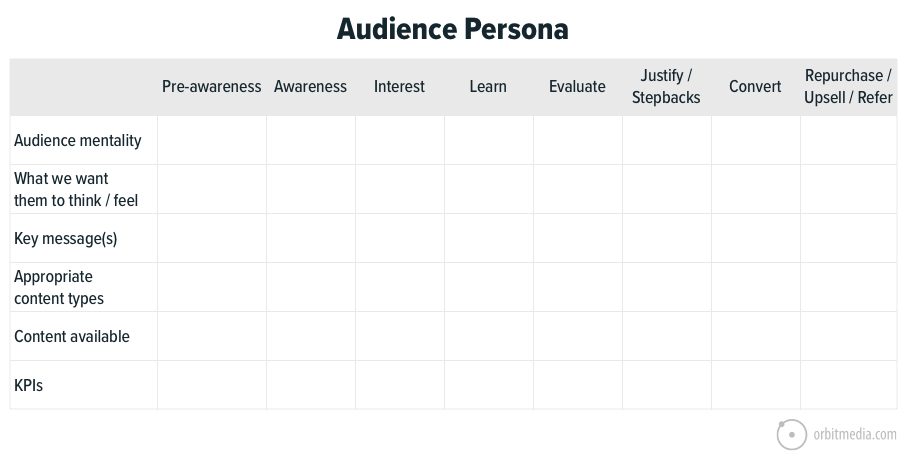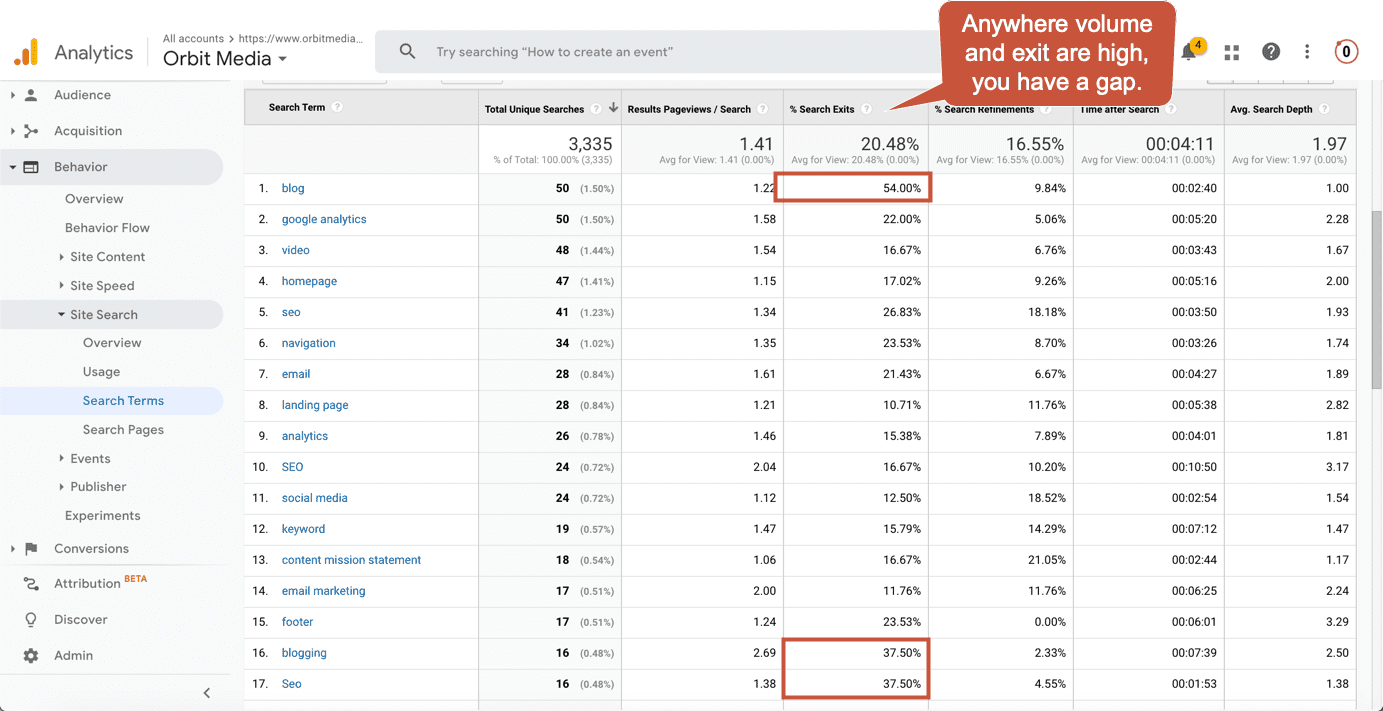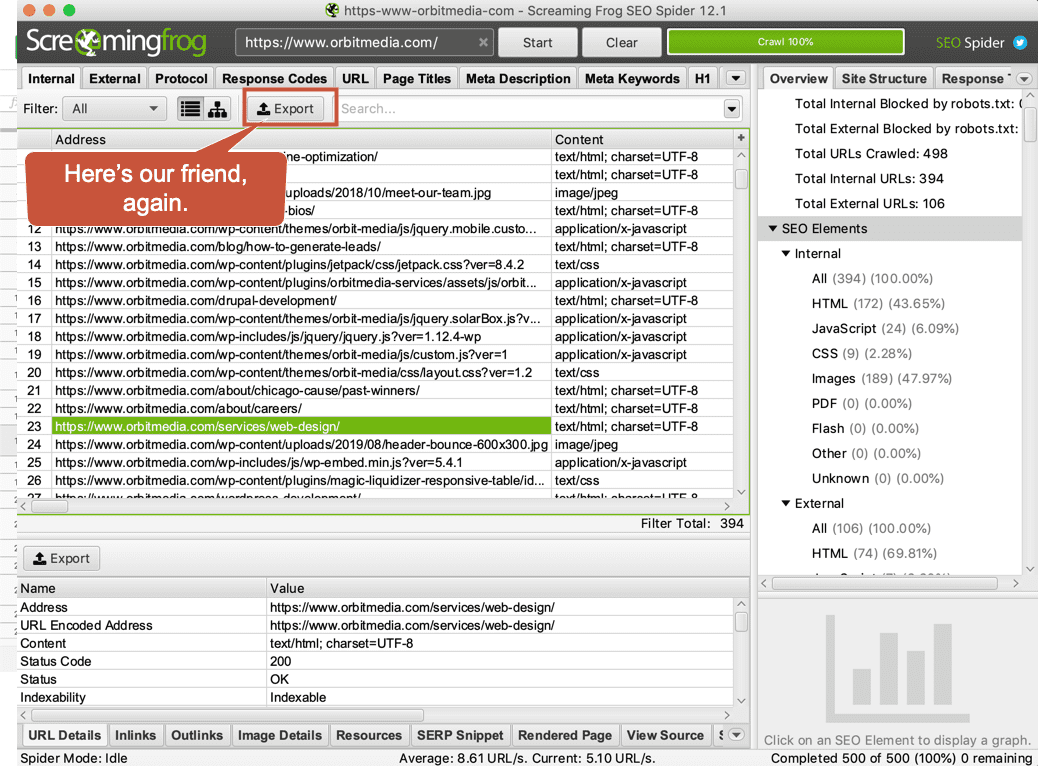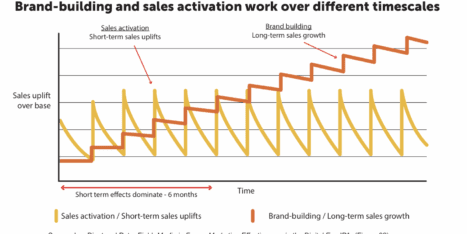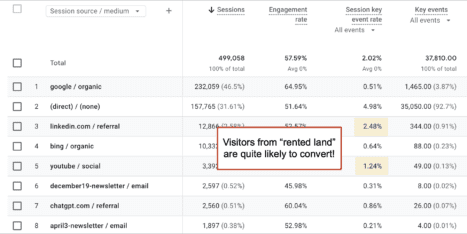We’ve all been there. You know you have a ton of content, but you don’t know 1) what everything is, 2) where it is, or 3) if it’s even still any good. When your content management hinges on going to that one person you know did that one thing that one time to find it, it’s time for a content audit.
Let’s be real. Conducting a website content audit can be a little intense. A lot intense, actually, if you have a lot of content or it’s been a really long time since someone did one. But they’re important—critical even—to your ongoing content marketing success. And I promise: they aren’t really that hard. Just time-consuming.
Why should you do a website content audit?
 |
David Brown, Knotch“Content audits help you assess objectively how well your content meets your audience needs, at various levels—page URL, topics, metadata, and categories. It will remind you of the parts of your content strategy that are effective. It may even inspire new user experiences. Typically 5% of content generates 90% of all engagement. The content audit gets you to your 5%.“ |
In this article we’re going to talk about two types of website content audits, and when and why to do them. We’ll also offer simple, step-by-step instructions to complete your content audit(s), and give you a few website content audit tools and resources, including a website content audit template you can use to get started. Ready? Let’s dig in.
What to include in a website content audit
There are two types of website content audits, and each provides a different type of useful information.
- Quantitative inventory website content audit – just the facts
- Qualitative website content audit – best practice, business- and audience-driven insights
Quantitative inventory website content audit: What it is and when to do it
This is a list of every piece of content you have on your website, and where it lives. It gives you baseline content performance data that will help you make simple decisions about what web pages you should keep, what you should clean up, and what you should kill.
It’s the lowest-effort-plus-broadest-insight content audit you can do. But it doesn’t give you insights into the strategic or brand value of your content.
The quantitative content inventory will show you all the content you have on your website—just like inventory at a store. Do a quantitative inventory when:
- You’re prepping for a new website
- You’re starting in a content marketing role at a new company, and there isn’t one
- It’s just been a while since your company did one
Pro tip! The average website lifespan is 2 years and 7 months, so if you haven’t done a solid audit in 3+ years, it’s probably time.
Qualitative website content audit: What it is and when to do it
This does two big things for you.
- By looking at your content against industry best practices, it helps you understand how your content is poised to perform.
- By looking at your content from a strategic business perspective, it gives you an invaluable, in-depth look at how your content measures up to strategic goals.
The only downside is, it takes more time, effort, and brainpower.
Qualitative audits help you prioritize content efforts, find low-quality content to kill or clean up and find bright spots to learn from. They also help you make sure that your content meets your audience needs and business goals. Do a qualitative audit when:
- You’re prepping for a website relaunch
- You’re working on a change in messaging
- You’re launching a new campaign
- It’s just been awhile
If you’re more of a visual learner, here’s a presentation I gave on website content audits. It’s the same step-by-step process that I go through below. Enjoy!
How to do a quantitative inventory website content audit: A step-by-step checklist
Step 1: Export your website data.
To start a quantitative inventory, export all your website pages and views for a period of time (at least one year) from your Google Analytics account. Pull data up to the date you’re doing the audit.
Now expand the number of rows you can see in the bottom right to show as many rows as possible.
Finally, use the export feature in the top right to export the data into a spreadsheet.
Now you have a spreadsheet with all the pages on your site that have been viewed at least once in the timeline you selected.
Note: If your Analytics account showed that more than 5,000 rows exist, you’ll need to pull this again and combine the exports to get a complete data set.
Get rid of the first few rows, and sort the sheet by range to display pages by pageviews, highest to lowest.
You’re probably going to see something like this and scratch your head a bit.
Don’t worry about that. At the end of the data, Google Analytics appends total pageviews by date for your full date range. Just get rid of this information—we don’t need it.
Step 2: Get rid of things that aren’t relevant.
Sort your sheet to find and remove obvious non-pages like search queries, website back-end pages, etc. I typically look at 1-page views and also page URLs for this information.
Step 3: Make manageable tabs, based on content type, for your assessment.
Create a tab for each website section. Your navigation is probably a good place to start, especially if your site architecture follows the navigation, and uses subfolders based on main navigation paths.
Notice the “blog” subfolder in the URL?
Create tabs for meaningful website sections like services, products, industries, blog, case studies, about, etc. Depending on your business’ complexity and volume of content, you might want to get more granular, breaking out individual services, product types, industries, and others.
Your goal is to get like content with like content. This way, you can do an at-a-glance analysis of standout high and low content performance. Visitors interact with different types of content differently, so you don’t want to compare the performance of a service page to a blog post, for example.
Having individual tabs means it’s also easier for you to manage and delegate the audit work. You should have someone familiar with the content in a particular tab look at it. So for example, you might get your industry marketing lead to look at the industry tab, your blog manager to look at the blog tab, etc.
If it’s only you doing the audit, creating individual tabs makes the process more manageable by breaking it into chunks. If you don’t have a tight deadline, keep yourself sane by doing a rolling audit. Audit blog posts this month, and service and product pages next!
Step 4: Find some friends and evaluate your content.
Now you’re going to enlist your helpers (hopefully). Sort tabs by columns like pageviews, time on page, entrances, and page value, and start to color-code outliers.
- If some pages of a particular type perform really well for a given metric: make those cells green.
- If some pages of a particular type perform really poorly for a given metric: make those cells red.
Step 5: Decide what content to keep, kill, and clean up.
After you’ve color-coded the sheet, you now have a simple visual snapshot of content performance, by page type. Align with your colleagues and mark some content to kill:
- Anything with pageviews over/under X unless something else stands out. (Don’t get rid of a lower traffic page if it’s for a specific niche and performs well otherwise.)
- Very old content without repurposing potential like case studies, blog posts, news items, events, and marketing campaign pages you forgot still existed (I bet you’ll find some of these!)
If you’re only doing a quantitative inventory, I’d suggest also using these insights to see what content might need a little cleanup.
- Content with high engagement and page value but low pageviews might be worth optimizing for search, and promoting to drive more visitors. On these pages, eyeballs = action.
- Content with high pageviews but very low engagement might have issues to fix. Make sure the pages work properly.
- Content with high pageviews but low engagement may be ripe for conversion optimization. Or, refresh the asset to make it more meaningful to your visitor.
Congratulations! You’ve finished your quantitative inventory website content audit!
Doesn’t that feel good? Getting rid of old, outdated, irrelevant, low-quality content helps you:
- Manage your website’s crawl budget
- Manage the authority of your site’s internal links
- Get rid of incorrect/outdated things
- More easily manage content migration during a website project
- Have less to manage moving forward
What’s missing in a quantitative inventory:
- Any sites not included in the Google Analytics View. Run those, too!
- Any pages so old or bad that no one has viewed them in the timeline you pulled data for. Use a tool like ScreamingFrog for this, especially if you’re doing the audit in preparation for a website relaunch.
- Anything you publish from this date forward. This is really important if you’re doing your audit for a website project, like a redesign and development. Note the date you did the audit, and be sure to keep track of anything you publish since. You don’t want your most current content to get overlooked in content migration efforts when you move to the new site.
- Any non-website content. This may seem obvious, but a complete content audit across all media is a good thing to do from time to time as well. Especially for things that are available online, like videos on your YouTube channel.
How to do a qualitative website content audit: A step-by-step checklist
Steps 1-3: Same as the quantitative inventory.
If you’ve already done a quantitative inventory, a qualitative audit is super simple to add to your existing spreadsheet.
If you haven’t already done a quantitative inventory, follow steps 1-3 there. Now you have a tabbed spreadsheet with all your current website pages, organized by page type.
Step 4: A free content audit template
No need to create your own, steal our website content audit template instead.
- Make a copy of the content audit template in Google Sheets.
- Duplicate it so you have as many tabs as your spreadsheet has.
- Copy and paste your website pages with Analytics data (and quantitative inventory findings) into the first few columns.
Step 5: Find some friends and evaluate your content.
Enlist your helpers (hopefully) and have everyone rate their content on best practice and strategic factors. Some factors will be evaluated with a yes/no, some with a rating scale of 1-5, and some will use company-specific dropdowns.
These are all set up in the template for you, at least with placeholders, though you’ll need to customize a few. The template is also set up so that everything will color-code as you go, giving you a nice, at-a-glance visual on page performance when you’re done.
Feel free to add any factors that are important to you, but here (and on the audit template linked above) are some to start with.
Best practices website content assessment factors
- Broken? This is a yes or no dropdown that simply asks: Does this page work? If the page doesn’t load, or embedded content that should appear doesn’t, or there are broken links on the page, mark it as Yes, and add details in a Notes column.
- Findability: How easy, on a scale of 1-5 (1 = worst, 5 = best), is it to find this page? Think search optimization, on-site search, and navigation.
- Ease of consumption: Can you understand quickly what the page is about, and what you’ll get from it? Is the page easy to scan and comprehend? Are there nice headings, subheads, bullets, and visuals to guide the visitor along? Rate consumption on a 1-5 scale.
- Actionability: Do you know what to do next, or is the page a dead end? What’s the page’s conversion rate? Make sure your pages help the visitor know what they should (or could) do next. Again, rate this on a 1-5 scale.
Strategic website content assessment factors
Start the strategic assessment by evaluating content quality and value.
- Is this good? Yes or no, just tell us if you think this is good content.
- Informative or actionable: Is this content meant to inform or educate the audience? Or is it actionable, meaning the visitor might want to reach out, contact you, purchase, etc.
- Brand/business value: On a 1-5 scale, how useful is this information for your organization? How aligned is it with your current marketing and business priorities?
- Audience value: On a 1-5 scale, how useful is this information for your audience? Are you speaking to them, or at them? Are you telling them things they care about, or talking about all about yourself?
- Messaging/tone: Does this content sound like you and your organization? Is it helpful, useful, and friendly? Rate this on a 1-5 scale.
- Accuracy: How accurate is the content on the page? Is this still current information? Is there outdated stuff that needs to be updated? Rate this on a 1-5 scale.
- EAT: Expertise, authority, and trust are factors Google uses to determine the value of a website or webpage. Give the page a gut check on these variables. Rate this 1-5 also.
Now we’ll get into some factors that are specific to content marketing.
- Audience: Put audiences (prospect, client, employee, media, etc.) specific to your company in the drop-down, and select which one this content asset is most relevant to.
- Industry: If you target content by industry, put your target industries in this drop-down list (you might also have a “general” or “other” or “NA” selection). Select which industry audience the content is for.
- Service: For you this might be service, it might be product, it might be something slightly different. But basically, we want to know what thing you do this content is about or intended for.
- Key topic: If there are specific topics or key messages that you know you want all of your content to align to, see how your current content stacks up.
- Funnel: Where in the funnel, or buyer journey, is this content most appropriate? The template selections offer TOFU, MOFU, and BOFU (top, middle, bottom of the funnel) but you can make this as granular as needed to map to your content marketing efforts.
- Objective: What’s the brand marketing purpose for this content? Think reputation/brand building, sales enablement, demand generation, employee engagement, etc.
Step 6: Decide what content to keep, kill, and clean up.
From your qualitative website content audit, you have strategic insights to guide what content you keep, kill and clean up.
- Lots of green? Good! That’s stuff to keep.
- Lots of red? Bad. That might be stuff to kill.
- Somewhere in the middle? Probably stuff to clean up.
 |
June, Pinyo, Paylocity“Be as thoughtful about what you keep and delete as you are about what you use resources to create. Even things that don’t have the numbers may hold value for repurposing. Remember that the goal is curation, not just clean-up.“ |
Congratulations! You’ve finished your qualitative website content audit!
Doesn’t that feel good? Now you know your content is positioned to perform, on-brand, current, and valuable to your audience.
- Older but still visible content is now new and visible
- Your visitors get a better experience with your brand and content
- Your brand is well represented
- You’re getting closer to your audience by focusing on their needs
- You’re increasing traffic by updating pages with ranking potential
- Your website is easier to manage
- You have a cleaner content management system (CMS) to navigate
- If you’re working on a website redesign, your content is easier to migrate (and you’re only moving the good stuff)
A few more helpful tips and website content audit resources
Before removing anything on your kill list, you want to be sure that there aren’t any unexpected and negative consequences to your content cleanup efforts.
That’s where a content auditing tool like Moz comes in handy.
#1: Don’t accidentally lose search rankings.
Use a keyword ranking tool to see what terms your site pages are ranking for. Look at the root domain report which shows you all the keywords your site is ranking for. (Note: To get the full report, we use Moz Pro the paid version)
Click on “see all ranking keywords” to get the full list.
Now export your keywords.
If a page on your “kill” list is ranking for meaningful terms, you don’t want to lose those rankings and organic traffic. Either:
- Recycle the URL by writing new, relevant content for it, or
- Redirect the URL to a related and relevant page
Pro tip! Doing a website relaunch for a high-ranking site? Check out our post on how to relaunch a high-ranking website without losing its SEO value.
#2: Find and fill the content gaps identified in your audit(s).
Here’s a link to a sample audience journey and content map. You can copy and use this as you please. It’s intended to be filled out per audience type or persona. It’s also depicted below.
Using a table like this helps you map your content within your content marketing strategy. Simply map your “keep” items to your audience personas throughout their buyer journey, in the “Content available” row.
Any holes you have left are places for your “clean up” and new content. Putting only your “keep” items in first can give you insights on how to best approach your “clean up” content.
You can also find insights on gaps to fill from your in-site search data. Go to Google Analytics into the report for Behavior > Site Search > Search Terms.
Any terms that are highly searched and have a high exit rate means that’s content your audience is actively searching for and they can’t find. (Note, this report only works if you’ve enabled it. See instructions here.)
Lastly, your FAQ pages might also offer some insights on content gaps. Using heatmap software like Hotjar can show you where on FAQ pages people click. Any hotspots are possible content gaps, and areas to improve on audience value.
#3: Find every last bit of potentially missing content, and get yourself ready for your new sitemap.
Remember how the quantitative inventory didn’t show us any pages so old out of date that no one has seen them in a while? Tools like ScreamingFrog will. Particularly if you’ve done your audit(s) in prep for a website relaunch, you’re going to want this information—and a bunch of other useful data ScreamingFrog provides.
Just put in your website and export it. (Again, I know … but worth it!)
The resulting report will tell you a ton of information about your website pages, like:
- What content is on the page (copy, images, videos, code, etc.)
- If the page is being indexed by search engines (meaning: people can find it)
- The search attributes (metadata) associated with the page, including the page title tags, meta description, and H1and H2 tags (headings)
- Page crawl data
- Information about page links (incoming and outgoing)
- Page performance and redirect data
Some of this is meaningful and super useful to you as a content marketer, right?
The content details in this export, paired with your audits, can be the foundation of your brand new sitemap.
Some of this data is a bit more on the technical side. If that’s not your jam—share the insights with your website team or partner. Errors in this report are often worth cleaning up. That will make your site more technically stable; a solid foundation with minimal errors. This is important because:
- It helps to ensure a great user experience
- Search engines don’t want to send people to poorly performing sites
- A solid website foundation = one you can build upon
Just like a home with cracks in the foundation, if your website isn’t technically sound, the content you put on it won’t be as strong.
Whew. We’re done. You did it!
Performing a website content audit can be exhaustive. And exhausting. But they are insanely useful to you as a content marketer, digital marketer, or website content manager. And they are crucial to your success if you’re launching a new website.
Follow the steps above and I promise, you’ll feel great when you’re done. And, and a bonus, you now have nice clean documentation of all your site content to work with from here on out. Keep that documentation going!
- Add new pages when they’re published
- Update page attributes when you make changes
- Add dates to the page rows to indicate when they were last touched
- Stick to a regular cadence to check pages for updates
- Set kill dates for time sensitive landing pages
- Do regular technical audits to check for issues
If you keep up with this as part of your day-to-day, your next website content audit will be smooth sailing.

